Your cart is empty!
Make checkout easy by booking all your reservations at once. Add your sites from different campgrounds into your shopping cart* and then choose checkout.
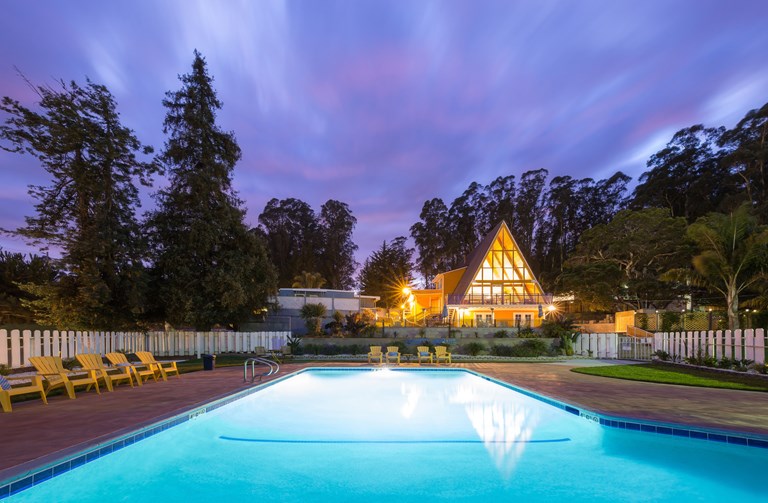

Salinas / Monterey KOA is a Great base camp for many things to do and see in the area! Whether you like Golfing, Racing, Whale Watching, Rodeos, or just want to walk on the beach, you will find plenty to do in the Central Coast region!
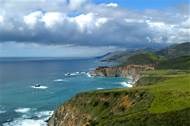
We are within 18 miles of Monterey Aquarium and Cannery Row. Carmel is only 25 miles with the 17 miles drive only 20 miles from us. We are right at the 101 and 156 highways, with the beach at Moss Landing only 7 miles away. Whale watching is right at the marina at Moss Landing and we have the best dog beach around. The famous "Phil's Fish Market" is also in Moss Landing (which has been on the Food Network Channel with Bobby Flay). We are within 40 minutes of the boardwalk in Santa Cruz and only 4 miles from Elkhorn Slough and Manzanita Park off Hwy 1. Salinas National Steinbeck Center is only 9 miles south of the park. Laguna Seca Raceway is only 20 miles from our park and such an easy on/off to all parking. The Garlic Festival in Gilroy is 18 miles. Don't forget the 17-mile drive out of Carmel, where you will end up at one of the best shopping areas around. Go wine tasting at the many wineries in the Salinas/Monterey area. Easy access to the 101 & 156 freeways at our back door.

Puma Road Winery & Tasting Room and Puma Road Portola Plaza are excited to welcome you back. Both locations are open for wine tastings and purchases from Thursday through Monday. Please note: for your convenience, we will continue offering complimentary local delivery to most of Monterey County for orders of $75 or more. Delivery days are Monday, Wednesday, and Friday. And, for those of you outside our delivery area, we are offering amazing flat rate UPS Ground shipping prices—$25 for 6-12 bottles, $40 for 13-24 bottles, $50 for 25-36 bottles, and $60 for 37 or more bottles. Call 831-675-3548 or click here to place your order today! We hope you and your loved ones continue to remain healthy and happy. We look forward to hosting you for on-site visits. Sincerely,
The Puma Road Family - Ray Franscioni is a third-generation Monterey County farmer. His grandfather, Silvio Sr., immigrated from Switzerland in the late 1800s and settled along the Salinas River in the heart of the Santa Lucia Highlands, where he began farming. Originally, the family farmed feed for their dairy cows—they were Swiss, after all. Eventually though, they—like most settlers of the area—discovered the richness of the soil and began farming other crops. Over the past twenty years, Ray, his family, and dedicated staff have gained a reputation for meticulously cultivating the finest grapes and providing them to some of the industry's best-known producers. More than a decade ago, Ray and his family embarked on a mission to craft wines from their own grapes. From the Santa Lucia Highlands, Paicines and Monterey County, Ray Franscioni and family offer their limited Puma Road and Lilia releases—wines proudly and equally representative of a two-decade dedication to the science of growing, and to the craft of wine-making.
32720 River Road
Gonzales, CA 93926

Monterey County is home to Big Sur's rugged coastline, the golf courses of Pebble Beach, Steinbeck's Cannery Row, the quaint, posh village of Carmel and the rolling vineyards of the Salinas Valley. Monterey County wineries now total over 75 with 40,000 acres planted with 40 different grape varieties. The wineries here include a few large million case producers but most make fewer than 25,000 cases annually, with a handful producing fewer than 5,000. Tasting fees range from nothing (at most of the Salinas Valley wineries) to up to $15 in Carmel Valley. Most charge $5 or less. The vineyards and wineries are spread out within seven different American Viticultural Areas (AVAs). Chardonnay, Pinot Noir, Riesling, and Pinot Blanc dominate the vineyards in the north. Cabernet Sauvignon, Merlot and Zinfandel are most common in the south. Over 40% of the county's vines are planted to Chardonnay with many of the vineyards owned by out-of-the-area wineries. Close to 70% of Monterey fruit is shipped out of the county.
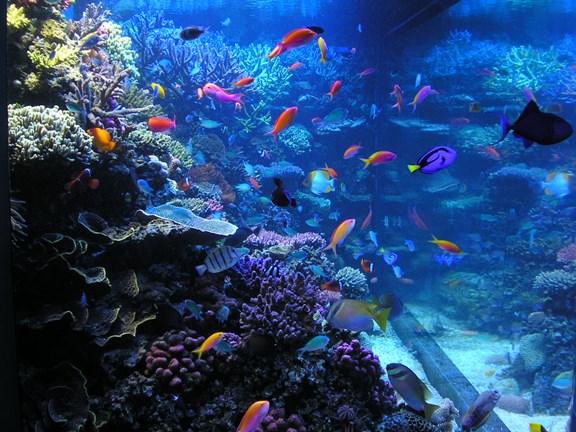
The Monterey Aquarium is only 18 miles from the park off Highway 156 to Hwy 1 to downtown Monterey. The aquarium is one of the largest with many exhibits as follows: Giant Pacific Octopus, Hot Pink Flamingos Kelp Forest Life on the Bay Mission to the Deep Monterey Bay Habitats Outer Bay Rocky Shore Sandy Shore & Aviary Secret Lives of Sea Horses Sea Otters Splash Zone & Penguins
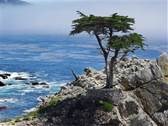
17-Mile Drive is widely recognized as one of the most scenic drives in the world. The famous coastal landmark runs through Pacific Grove to Pebble Beach, from the dramatic Pacific coastline to the majestic Del Monte Forest. The awe-inspiring vistas and legendary sites can easily fill an entire day with exploration and discovery, although visitors with less time should not miss the opportunity to experience this wondrous journey as well. Marvel at some of nature's treasures found along 17-Mile Drive including The Lone Cypress – one of California's best-known landmarks – Spanish Bay, Cypress Point Lookout and Carmel Bay. You can also see the emerald fairways of The Links at Spanish Bay, Spyglass Hill and the world-renowned Pebble Beach Golf Links. Be a winner and stop at the Pebble Beach Golf course and have your picture taken on the 18th hole.
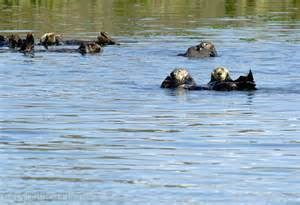
Want to see wildlife: In Moss Landing the "Elkhorn Slough Safari" gets up close and personal with sea otters, harbor seals and shorebirds during a pontoon boat ride on one of California's largest salt marshes. Older kids will enjoy kayaking on the Monterey Bay) the nation's largest marine sanctuary) past harbor seals, sea lions, kelp beds, coastal birds and more.
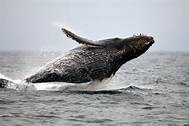
Whale-watching cruises depart from Monterey's Fisherman's Wharf throughout the year to spot humpbacks, blues and grays. There are also cruises that depart from Moss Landing during the season.
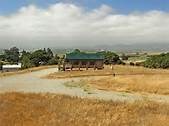
Wild Thing promises a roaring good time with daily tours showcasing lions, elephants, bears, zebras, camels and other animals living at the facility. Wild Things A. R. Inc. 400 River Road Salinas, CA 93908 (831) 455-1901 Fax (831) 455-1902 call us at (800) 228-7382 Located on the Vision Quest Ranch in Monterey County California "Wild Things " A. R. Inc. is dedicated to providing professionally & humanely trained wild/exotic & domestic birds and animals for film, television, live productions, education and much more. Wild Things takes great pride in offering sanctuary to many animals that can no longer participate in entertainment or would otherwise not have a home or family. We've adopted many of our animals from situations that were less than ideal for their health and well-being. We have found ways to share them with others on our tours and educational programs that we feel are fun, safe and rewarding to all - especially the animals. We invite you to tour our website to discover all the exciting ways you can visit and learn about our animals and our facility.
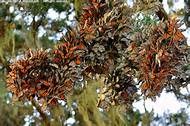
Every year, over 25,000 Monarchs Overwinter in Pacific Grove. Arriving in October, the Monarch Butterflies cluster together on the pines and eucalyptus trees of the Sanctuary. Their migration to Pacific Grove is so unique and inspiring that Pacific Grove is nicknamed "Butterfly Town, U.S.A." The community has always welcomed the butterflies and sought for their protection. Citizens of Pacific Grove voted to create an additional tax to create the Monarch Grove Sanctuary, led by dedicated volunteers. Where do they come from? The Monarch Butterfly (Danaus plexippus) is a widespread tropical insect that ranges as far north as Canada. It cannot withstand freezing winter temperatures. To survive, the Monarch migrates to safe overwintering sites that are neither cold enough to kill it, nor so warm that it wastes precious energy flying too much. Monarchs east of the Rocky Mountains spend the winters in high mountains in central Mexico. Monarchs west of the Rockies migrate to locations on the central California coast. En route, they may travel as far as 2,000 miles, covering one hundred miles per day, and flying as high as 10,000 feet. A mighty achievement for such a seemingly fragile insect!

The Winchester Mystery House™ Beautiful but Bizarre! Winchester Mystery House™ is an extravagant maze of Victorian craftsmanship – marvelous, baffling, and eerily eccentric, to say the least. Tour guides must warn people not to stray from the group or they could be lost for hours! Countless questions come to mind as you wander through the mansion – such as, what was Mrs. Winchester thinking when she had a staircase built that descends seven steps and then rises eleven? Some of the architectural oddities may have practical explanations. For example, the Switchback Staircase, which has seven flights with forty four steps, rises only about nine feet, since each step is just two inches high. Mrs. Winchester arthritis was quite severe in her later years, and the stairway may have been designed to accommodate her disability. The miles of twisting hallways are made even more intriguing by secret passageways in the walls. Mrs. Winchester traveled through her house in a roundabout fashion, supposedly to confuse any mischievous ghosts that might be following her. This wild and fanciful description of Mrs. Winchester's nightly prowl to the Séance Room appeared in The American Weekly in 1928, six years after her death: “When Mrs. Winchester set out for her Séance Room, it might well have discouraged the ghost of the Indian or even of a bloodhound, to follow her. After traversing an interminable labyrinth of rooms and hallways, suddenly she would push a button, a panel would fly back and she would step quickly from one apartment into another, and unless the pursuing ghost was watchful and quick, he would lose her. Then she opened a window in that apartment and climbed out, not into the open air, but onto the top of a flight of steps that took her down one story only to meet another flight that brought her right back up to the same level again, all inside the house. This was supposed to be very discomforting to evil spirits who are said to be naturally suspicious of traps.”
525 South Winchester Blvd
San Jose, CA 95128
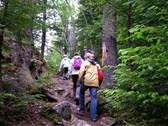
Back on land, explore the region's trails and back roads. Day-hike options: "The climb" - Rock climbers should go to Pinnacles National Monument for a variety of routes. Sand City's Sanctuary Rock Gym offers climbing guides to help you explore the techniques of the trade, including top-rope climbing, rappelling, anchoring skills, outdoor etiquette and more. "Hike if off" - Big Sur Guides and Hiking shows visitors the region's secluded waterfalls, lush canyons and secret coves. For a list of the top-10 day hikes, visit seemonterey.com "Saddle up" - Many of the area's hiking routes are also equine-friendly. Several local companies can arrange excursions along wind-sculpted dunes, over oak-studded hills and past the shifting shades of the Pacific, including Molera Horseback Tours, Pebble Beach Equestrian Center and Monterey Bay Equestrian.
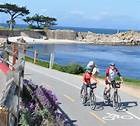
Two wheels or four, choose from miles of on- and off-road options that showcase Monterey County's incredible views and diverse terrain. The scenic route: The paved Monterey Bay Coastal Recreations Trail follows the old tracks of the Southern Pacific Railway 18 miles fro Pacific Grove to Castroville. Cycle past vibrant tide pools, Fisherman's Wharf, Cannery Row, towering sand dunes and abundant row crops. Off-Road: Jump some serious dirt on miles of trails at Carmel Valley's Garland Ranch Regional Park, Toro Park in Salinas or the Fort Ord Public Lands in Seaside and Marina. On clear days, many trail crests offer well earned glimpses of the Monterey Bay.
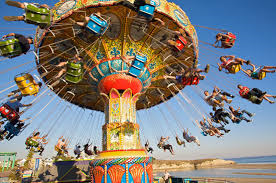
What is the Boardwalk? The Boardwalk is a half-mile long historic amusement park next to Santa Cruz's mile long Main Beach. It features more than 34 rides and attractions including two National Historic Landmarks: the 1924 Giant Dipper roller coaster and the 1911 Looff Carousel plus plenty of modern thrill rides, dozens of restaurants, shops, games, indoor arcades, and miniature golf.
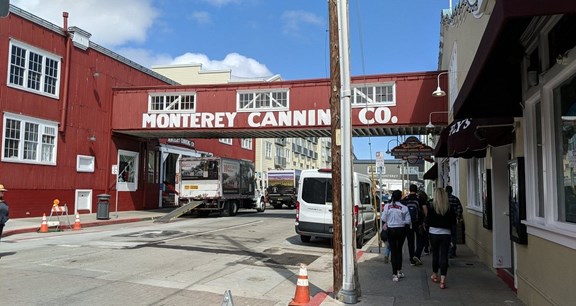
Cannery Row is the waterfront street bordering the city of Pacific Grove, but officially in the New Monterey section of Monterey, California. It was the site of a number of now-defunct sardine canning factories. The last cannery closed in 1973. The street name, formerly a nickname for Ocean View Avenue, became official in January 1958 to honor John Steinbeck and his novel Cannery Row.[1] In the novel's opening sentence, Steinbeck described the street as "a poem, a stink, a grating noise, a quality of light, a tone, a habit, a nostalgia, a dream."Today the area offshore from Cannery Row is the Edward F. Ricketts State Marine Conservation Area (part of the larger Monterey Bay National Marine Sanctuary)[7] and is home to a large resurgent population of California sea lions.Cannery Row itself is now a tourist attraction with many restaurants and hotels, several of which are located in former cannery buildings, and a few historic attractions. Some privately owned fishing companies still exist on Cannery Row, housed on piers located a short distance from the historic district frequented by tourists.In recent years, Cannery Row has become increasingly popular among sport fishermen due to extensive public fishing facilities. MacAbee Beach and San Carlos Beach, which bookend Cannery Row[8] are both popular spots for kayak-launching; San Carlos Beach is one of Monterey Bay's most popular scuba-diving spots.[1]
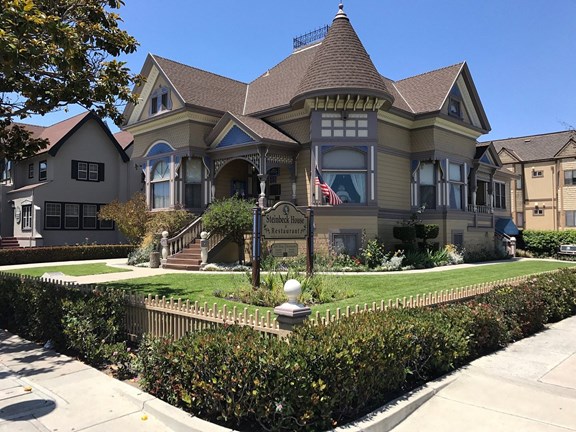
This Queen Anne style Victorian was the birthplace and boyhood home of author John Steinbeck. Built in Salinas in 1897, the Steinbeck family moved into the house in 1900. The Valley Guild was formed by eight enthusiastic women who shared a common interest in gourmet cooking and wanted to showcase Salinas Valley produce. The volunteers of Valley Guild purchased and renovated the house. It was opened to the public as a restaurant on February 27, 1974 -the 72nd anniversary of John Steinbeck's birth. The house is operated by volunteers with a minimum of paid staff, and recently celebrated the 40th Anniversary. The Best Cellar is in the original basement of the Steinbeck House. The Best Cellar is a delightful gift shop featuring unique gift items as well as vintage and new Steinbeck books. Original furniture from the Steinbeck family is on display including the headboard of the bed in which John Steinbeck was born.
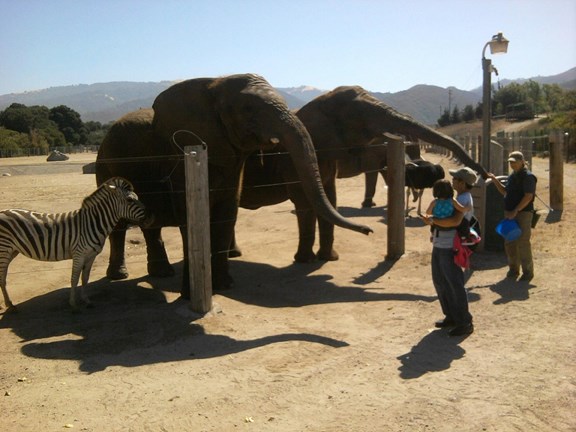
Monterey Zoo is open 10:00 am – 3:00 pm 7 days a week – including most holidays except Easter, Thanksgiving, and Christmas Day. Come visit with a variety of animals including monkeys, cats, reptiles, and our Brand New Rhino exhibit! Bring your headphones and a smart device to watch short videos on the animals as you wander using our unique QR code signage. Monterey Zoo is proudly accredited by the Zoological Association of America. Pricing: $35.25 ages 15-64 $31.75 ages 65+ $25.00 ages 2-14 Free ages less than 2 $8.00 any stroller or wagon
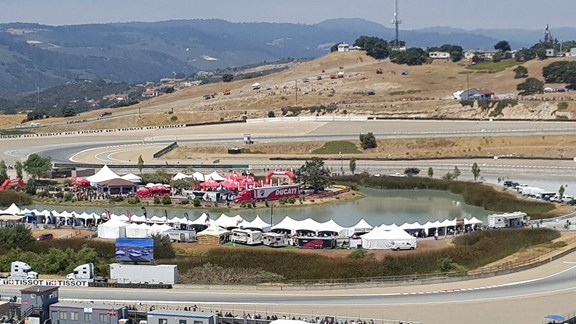
The Monterey Peninsula's love affair with world-class racing traces its beginnings to the inaugural running of the Pebble Beach Road Races in 1950. Those sports car events quickly outgrew the public roads of the Del Monte Forest and a beautiful new road facility was born on November 9, 1957. Since then, Monterey has been visited by some of the most prestigious racers in history; Roger Penske, Dan Gurney, Parnelli Jones, Kenny Roberts, Bobby Rahal, Wayne Rainey and Valentino Rossi to name a few. From Can-Am to IndyCar, to motorcycles and historic race cars, WeatherTech Raceway Laguna Seca is the spiritual racing home to many.
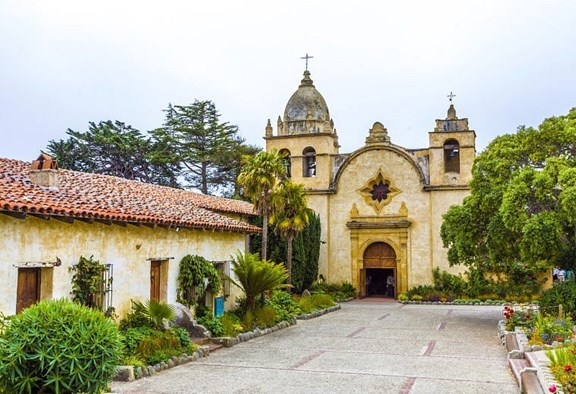
Welcome to the Carmel Mission Basilica and the Shrine of Saint Junipero Serra, the Founding Father of California! Today the Mission is an active Catholic Parish, museum, and school, and it is at the center of one of the most historic and beautiful Pacific coast communities in State. This historic site has the great designation of being listed on the National Register of Historic Places and is both a National and State Historic Landmark. The Carmel Mission Basilica is the second of the Alta (Upper) California Spanish Missions. It was originally founded on the shores of Monterey in 1770. Soon after its founding, the Mission was moved by Francian Father Junipero Serra to its current location near the ocean mouth of the Carmel River in 1771.
Father Serra established the Mission near the river to serve the Esselen and Ohlone communities, the Native Peoples of the region. Then known as Misión de San Carlos Borromeo de rio Carmelo, it served as the evangelistic headquarters for the Alta California Missions three times throughout the Spanish and Mexican era. In 1784, after 15 years of Missionary work and the creation of seven more Missions (nine in all), Saint Junipero Serra died and was interred in the Church of the Mission. He was succeeded by Father Fermin Francisco de Lasuén, who built nine more Missions. In 1797, with the tremendous work and efforts of the Carmel Mission Indians, Father Lasuén built the iconic Stone Church, which our faith community continues to worship in today.The Mission lands and buildings under the Mexican Government were secularized in 1834 and the Mission Indians and Franciscan Fathers were required to leave. By the start of the American Gold Rush in 1850, California had officially become the thirty-first state of the United States, and the Mission fell into disrepair. The Missions collection of colonial art and liturgical artifacts were brought to Monterey. By the end of the 1880's, the Mission became a historic attraction and was visited by tourists who traveled by newly established train rails to the Monterey Peninsula. The Christian Mission Indian families continued to preserve the site as a sacred space, and services during secularization were held for the community in the Mission Church sacristy yearly on the feast day of San Carlos. As the State of California formed, the importance of the Carmel Mission to California History helped to establish efforts to restore the Mission. The church roof was first repaired in 1884. In 1933, the Diocese of Monterey enlisted the aid of Harry Downie; the noted Mission restorer, worked for 50 years as the Mission Curator, and the Community of Carmel by the Sea grew alongside the Mission's restoration. Harry Downie labored and partnered with craftsmen, parishioners, and capable assistants, including Richard Menn and Huu Nyguen. In 2013, through the efforts of the community, the Carmel Mission Foundation was formed, and a modern seismic retrofit of the Mission Basilica Church was completed, ensuring the historic building would be secured for the benefit of future generations.
In 2016, the Mission Quadrangle courtyard was restored and improved to meet the needs of our Parish and our yearly schedule of events. We benefit greatly today from their enduring efforts to preserve and protect this sacred space, and we continue in that work today. Over the years, this humble Mission has been host to world leaders, presidents, and kings. In 1960, the Mission was honored with the title of Basilica, and efforts in the cause to canonize Father Junipero Serra were fully formed. The Future Saint, Pope John Paul II, visited the Mission and 1984 and he later beatified Father Serra in Rome, the final step in the process of becoming a Saint. In 2015, Saint Junipero Serra was Canonized in Washington D.C during his Holiness Pope Francis's official State visit to the United States. During this historic moment, the Mission Courtyard was at the center of a community celebration, and parishioners and visitors watched the canonization celebration together via satellite, on a live feed. We warmly welcome you and we hope that you enjoy your visit with us at this sacred place of history, here at the Carmel Mission Basilica, the “Father of the California Missions”!
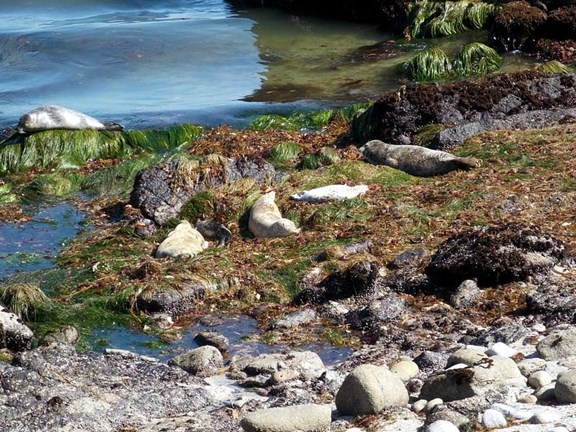
Popular hiking trail running along the Pacific Grove and Monterey coast.
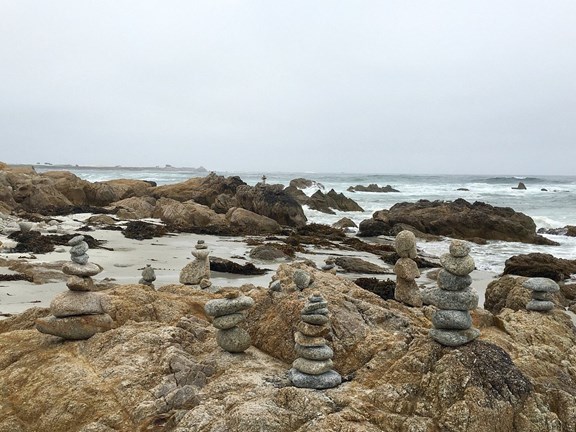
The name of this State Beach means "a refuge by the sea," which describes the breathtaking views of forest, surf and sand on more than 105 secluded acres of scenic forest and sand dunes.

The water is brisk and the surf is hazardous, but the amazing views from the shore will draw you like a magnet to these striking white sand beaches for a leisurely stroll or picnic.
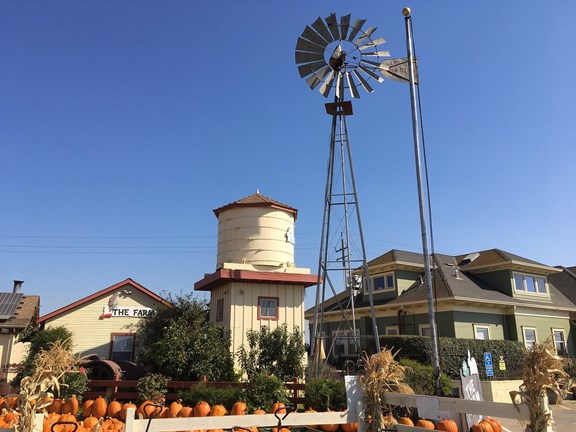
This working farm is also an agricultural education center, demonstration farm, produce stand and recreation destination. You can pick your own vegetables, see the animals, learn or just shop in the farmstand.
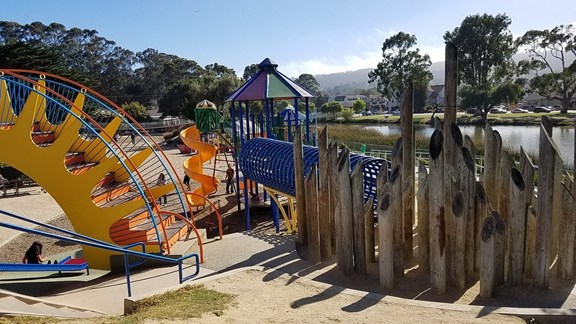
Designed by the creator of the 'Dennis the Menace' comic, this expansive park promises great fun for kids of all ages. Here, you'll find tons of slides and large play structures, a maze, an old steam engine, a baseball field, a skate park, and even a rock-climbing wall. Plus, a little bronze statue of Dennis the Menace himself. There's even a lake (where you can ride a pedal boat) and a beach right across the street. The park is popular for birthday parties, picnics, and barbeques, especially over the weekends—visit on weekdays for fewer crowds.
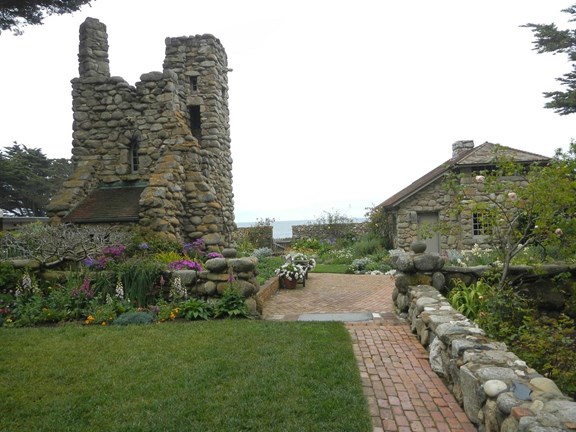
The historic home of the poet Robinson Jeffers is open to the public for group tours Fridays and Saturdays. First Tour at 10AM, last tour at 3PM. Tours last about 1 hr 20 minutes. Docents describe the life and times of Robinson and Una Jeffers, his poetry, philosophy, and accomplishments of building his home of sea-tossed granite. Wear walking shoes to cope with uneven ground and steep stairs. No photography during tours. Special events annually are the Spring Garden Party held the first Sunday in May when photography is permitted in Tor House and Hawk Tower. Jeffers Fall Festival is held the first weekend of October and includes discussions and presentations on Jeffers' poetry and his life in Carmel. Both are paid events. Check the Tor House web site for details near the time of event.
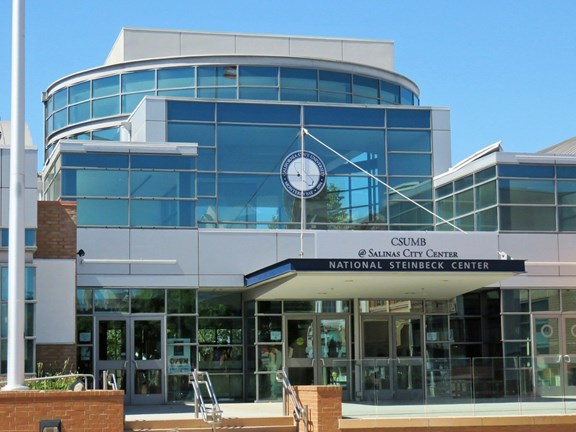
A celebration and exploration of the well-known author's work through multi-sensory exhibits, priceless artifacts and live theater performances.
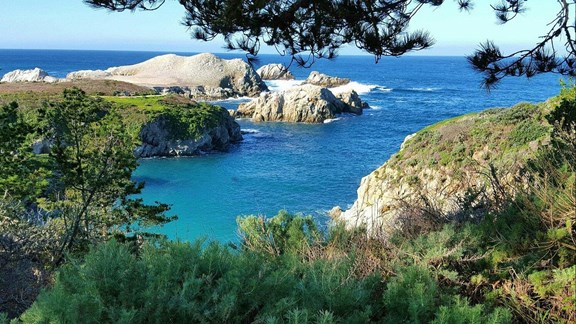
Home to a rich marine habitat, this nature reserve is popular for both whale-watching (in winter) and spotting sea lions (all year round). With amazing natural landscapes, it's great for hiking along the ocean or simply strolling around and taking in the magnificent rocky coastline lined with rare Monterey cypress trees. If you're into water activities, go kayaking or even scuba diving among 70-foot-high kelp forests and diverse marine life. Parking spaces are limited, so get there in the early morning to grab a spot. Otherwise, sign up for a guided tour that will take you straight into the reserve.
That doesn't mean this area has to always be empty. When you start reviewing camping options, your history will display here to help compare sites and find the best stay. You will be able to share your stay information with friends or family and save it for a later time if you have a KOA Account.
Make checkout easy by booking all your reservations at once. Add your sites from different campgrounds into your shopping cart* and then choose checkout.